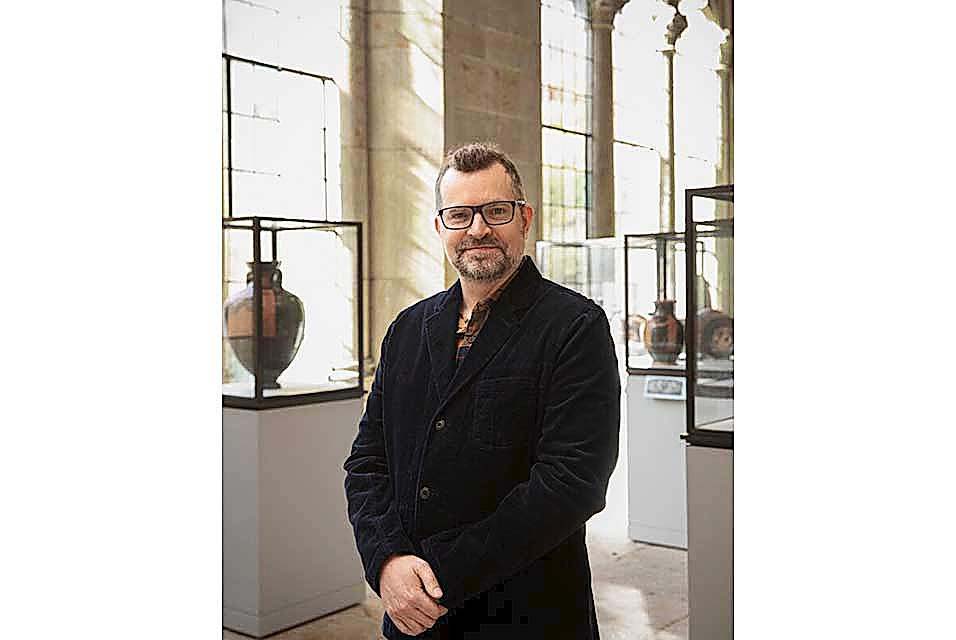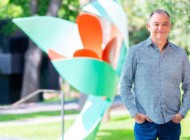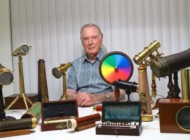
On October 1, the Yale University Art Gallery welcomed Bryan R. Just as its newest Molly and Walter Bareiss curator of Ancient Art. Formerly the Princeton University Art Museum’s Peter Jay Sharp, Class of 1952, curator and lecturer in the Art of the Ancient Americas, Just is well-versed in curatorial experience. He is also a Yale University alumnus, earning his bachelor’s degree in archaeological studies and history of art in 1995. Antiques and The Arts Weekly spoke with Just via email about the return to his alma mater, and what this new opportunity means for the scholar of Maya and Mesoamerican art.
Congratulations on your new position as Molly and Walter Bareiss curator of Ancient Art at the Yale University Art Gallery! How will this position differ from the one you held at the Princeton University Art Museum from 2008 onwards?
Thank you. My new post at Yale situates my field of specialization — art of the ancient Americas — within a curatorial department that includes ancient Mediterranean art as well. Previously, I was responsible for most of the collections of Indigenous arts of the Americas, from ancient times to the present. At Yale, I am excited to think about and guide curation of the ancient world writ large.
I understand that you received your bachelor’s degree in archaeological studies and the history of art at Yale — welcome back! How did this educational experience propel you forward into the career you have today?
I am delighted to be back at Yale, thank you. Yale holds a special place not only in my mind but in ancient American scholarship. Yale professor George Kubler was the first academic to teach the subject as art history proper. Wendell Bennett, Irving Rouse and Floyd Lounsbery were other important Twentieth Century scholars at Yale investigating the ancient Americas from archaeological and anthropological perspectives. During my first year as an undergraduate, I stumbled into the field when a roommate encouraged me to join him in Michael Coe’s seminar on the Aztecs. Soon thereafter, I came to know Mary Miller, a leading scholar on Mesoamerican art history and Maya art in particular. Mike and Mary became my advisors and sparked the curiosity that led me to graduate studies. I was also impressed by the graduate students each trained, many of whom are now my professional colleagues. Today, other specialists in both history of art and archaeological studies at Yale are similarly conducting important scholarship and drawing a new generation of budding scholars to the field. I believe the resulting critical mass of scholars and students continue the deep tradition of Yale’s place in the subject. I feel honored to play a part in this ongoing tradition as a curator.
Of perhaps equal import, my first bursary student (work-study) positions at Yale were at the Gallery, granting me an intimate sense of the inner workings of museums and exceptionally direct engagements with original works of art. In fact, I returned to the Gallery to work full-time for one year while my then-fiancé studied at Yale.
You helped to curate both “Gifts from the Ancestors” in 2009-10 and “Dancing into Dreams” in 2012. What potential ideas for similar (or different!) exhibitions do you have in mind utilizing the Ancient Art and Art of the Ancient Americas collections at the Yale University Art Gallery?
I am excited at the prospect of developing exhibitions at Yale, although I am not yet ready to share any specific ideas. I’m finding the process of learning Yale’s collections fascinating, and several ideas are beginning to coalesce, so stay tuned!
You taught seminars and introductory courses at Princeton in your specialized area of focus, Maya and Mesoamerican art. How did teaching the younger generation change the way you conducted your curatorial responsibilities?
Teaching and curating at the same time helped me to see how working with original works of art can inform and inspire students, while also teaching me ways university museums might repurpose effective educational tactics learned in the classroom for public consumption in gallery spaces. Just last week I began working with Yale’s brilliant student gallery guides, helping them to consider involving ancient American objects in their public tours while also learning from them what aspects of gallery design helped or hampered their work. I guess the core lesson learned is that, whether among teachers and students or curators and the public, collaborative learning is both the most impactful and the most fun for all.
What are you looking forward to the most about this new position?
This may be the hardest question, since there are many things I am already enjoying and looking forward to. Each museum has its own unique history of collection-building and scholarship. Learning this history, and in turn contributing to it, are exceptionally rewarding in their own right. Working with a network of colleagues and students across the campus is also particularly exciting to me, as is working closely with my Gallery colleagues, especially Lisa Brody, who is our resident expert on Mediterranean art, which I am also enjoying learning better. As I noted earlier, I am enthused and intrigued at the prospect of engaging ancient art from different places throughout the world in ways that might inform how we understand and appreciate one another today.
—Kiersten Busch




